Cold weather food for those long nights of winter, Classic Beef Stew & Dumplings is…

A Molecular Valentine
A Molecular Valentine from the Chef in my life. This Valentine’s Day instead of posting yet another red velvet cupcake, we decided to let Food Gypsy Technical Advisor, Chef B, loose with some food science to breakdown a few elements for you to try in your kitchen.
We call this sultry little appetizer From Russia with Love; smoked salmon with a potato salad in a light, grainy mustard dressing, grapefruit caviar, borscht jelly, asparagus sprouts, borscht spaghetti and a beet foam.
Molecular gastronomy is science and food taken to a whole new level. Cooking has always been about science, the application of heat, cold, acid, fat, moisture, flavour, colour, texture and spice; understanding the properties of an ingredient and using techniques to achieve a desired result. Molecular gastronomy takes us several steps further into the world of beakers and Bunsen burners and opens up new methods, artistic possibilities and ways to experience food.
Several of our readers have expressed an interest in molecular cuisine, so we thought we might start with a plate that combines molecular applications along with some recognizable elements, to take the mystery out of molecular gastronomy.
Using three easy molecular processes, we’ve taken a relativity simple set of ingredients to a rather extraordinary result using the techniques of Gelification, Spherification and Emulsification.
Gelification: the process of turning a liquid into gel which is a solid, jelly-like material that can have properties ranging from soft and weak to hard and tough.
In this application we used the additive Agar Agar to form the flat jellied disks, and borscht spaghetti you see here.
Agar Agar is not new; it’s derived from a polysaccharide that accumulates in the cell walls of red algae and is often used in Asian desserts and as a vegetarian gelatin substitute. Yes… it’s seaweed. Many different kinds of seaweed (such as Irish Moss) have been used as thickening agents for hundreds of years in cuisine. Now Agar Agar is available in a powdered form for convenience and more accurate measurements.
Chef B combined Agar Agar with the clarified juices of that great big, beety, meaty borscht we made last week, then he took the (now) thickening liquid and pushed it through hallow tubing, chilled the whole works in ice water, removed it from the tubing by forcing air through and TA DA — Borscht Spaghetti.
The remainder, we set in the bottom of a low, flat bowl, and he later cut and used it as a jelly base on the plate for colour, texture and structure.
Spherification: the culinary process of shaping a liquid into spheres which visually and texturally resembles caviar.
The delicate pink spheres of grapefruit juice you see, perched on the smoked salmon, were the result of adding Agar Agar to grapefruit juice, bringing it to a boil then dropping it, drop-by-drop, into ice cold oil.
The oil was chilled for almost two hours in the freezer, Chef B found he needed to drop five droplets, one on top of the other, to get the right size and to allow the liquid to sink into the oil and form a beautiful, delicate ball. The only way to determine just what worked best was with a little experimentation.
This is not Chef B‘s first experience with molecular cuisine; in his time with Le Cordon Bleu, he was privileged to see the grandfather of molecular cuisine himself, Hervé This, in action. Since then he’s used several molecular kits in the kitchen and often uses foams and jellies in his cuisine.
“Each molecular kit is a bit different, each brand of additive (e.g. Agar Agar) I’ve used has been slightly different in their results, just like different brands of peanut butter taste different. I find l have to play a bit to know how I can use each, and how far I can stretch it to get the results I’m looking for.
When you’re using molecular elements it’s important to have a plan. I can take any five ingredients and make you a meal conventionally, it will look good and it will taste good. With molecular cuisine you have to think in terms of how each element will play, how the plate will look, and how the ingredients, in each form, work together, and then you have to find the harmony.
It’s like moving from a rock band to the Royal Philharmonic… “ ~ Chef B
Emulsification: the process of turning a liquid into a light air foam.
The additive involved with this technique is Soy Lecithin, which we added to stabilize the whipped beet juice into a standing beet foam. Lecithin is an oily substance that occurs naturally in the plant (soybeans) and animals (egg yolks) world.
Soy lecithin is a common food additive that you’ve no doubt seen on many labels. It’s extracted from soybeans as a by-product of soybean oil production. Soy lecithin is one very popular emulsifier and it’s easy to use; simply add it to a liquid, whip to a foam and allow to stand for five minutes before plating.
A foam is a beautiful way to handle a sauce or a finishing element on a savory dish, in a dessert or a on a cocktail. It has an almost explosive effect on the pallet, the air carries the flavor up to the sinuses and heightens the pleasure of the moment.
Everything else you see is very simple, a rose of smoked salmon formed by rolling the salmon gently by hand and palming it as needed, to form the base and petals. A light potato salad with chive, mayo and a grainy Dijon dressing was ring formed on top of a round of borscht jelly. You also see drops of the dressing on the plate for added texture and flavour.
A fresh dash of asparagus spouts is positioned artfully under the salmon and on top of the potato salad. This gives the plate structure and texture. Then the rose is finished with delicate beads of grapefruit.
I’ll be honest, without Chef B in the Gypsy Kitchen, this is something I never would have considered doing, but after watching the processes and plate come together (like a masterpiece), it gave me new ideas and took all the fear out of experimenting with molecular elements.
I’d like to try it myself, I’ll start small… with a cocktail or a dessert. I envision suspended drops of something, likely booze.
But how does it taste?
In our time together in the kitchen I learned a great deal about the properties of various liquids and new textures and applications, but what I did not expect to learn was a new way to eat.
Eating molecular is about involving all the elements at once, like a complicated piece of music, if is not meant to be dissected, it’s meant to be held in symphony. The way this worked against my palate was surprising, like giving my mouth a new way to taste. In many ways it was startling, something firm that is usually soupy, something smooth and round that explodes with citrus tang against your tongue, all backed by a smokey, fatty fish.
It made me stop and breathe between bites because that was the best way to ready my senses for a fresh onslaught of flavour. I’ve never experienced food in quite this way before and that, in itself, makes molecular gastronomy worth the science.
More molecular for you to chew on, resources and recommended reading:
Kitchen Mysteries: Revealing the Science of Cooking (Arts and Traditions of the Table: Perspectives on Culinary History) by Hervé This
This is the original chemist of molecular cuisine, and his Kitchen Mysteries is essential reading for any serious food craft-er. Science geek that I am, I love this book and often gift it (to fellow food geeks) because I find pleasure in knowing how (and why) things work.
If you’re interested in playing with a few molecular elements in your kitchen, invest in a small home kit like the CUISINE R-EVOLUTION kit available on line from molecule-r.com. Under $80 it comes with five additives, some specialized equipment like syringes and tubing and a very easy to follow along instructional DVD.
Personally, this was just my speed, it was almost idiot proof and had some great ideas for future applications. If you’re new to molecular, this could be a whole lot of fun without a steep investment.
For the serious among you, and those pursuing a career in the kitchen, check out Infusions 4 Chefs and their range of products and demo materials. Including their line of El Bulli products, just because it’s (currently) closed doesn’t mean we can’t learn from Ferran Adrià!
May your Valentine’s Day be filled with love… and all its elements.

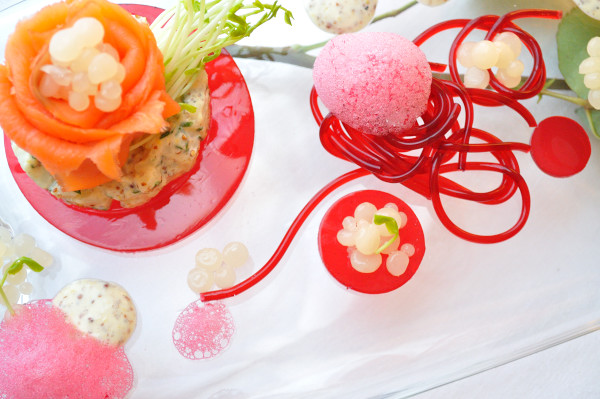
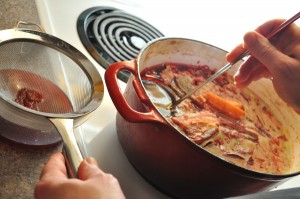

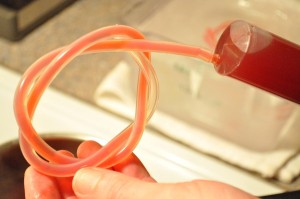

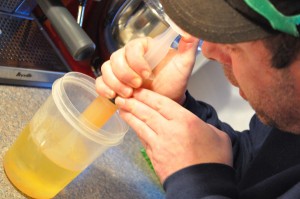
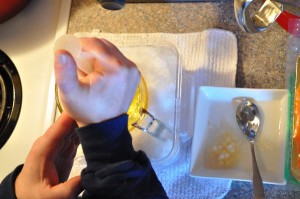
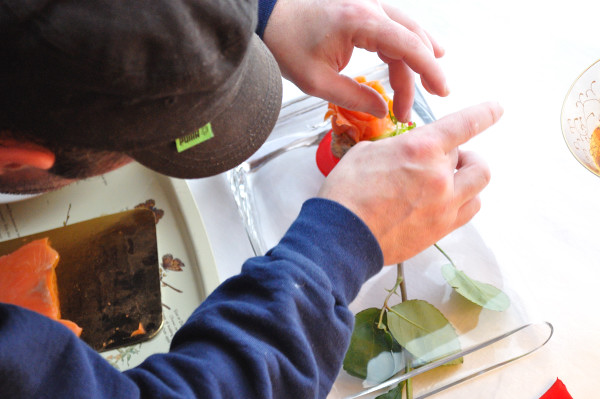
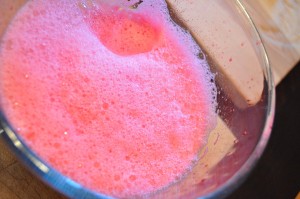
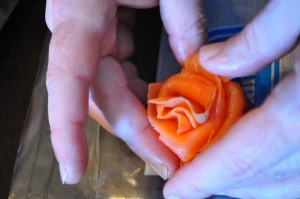


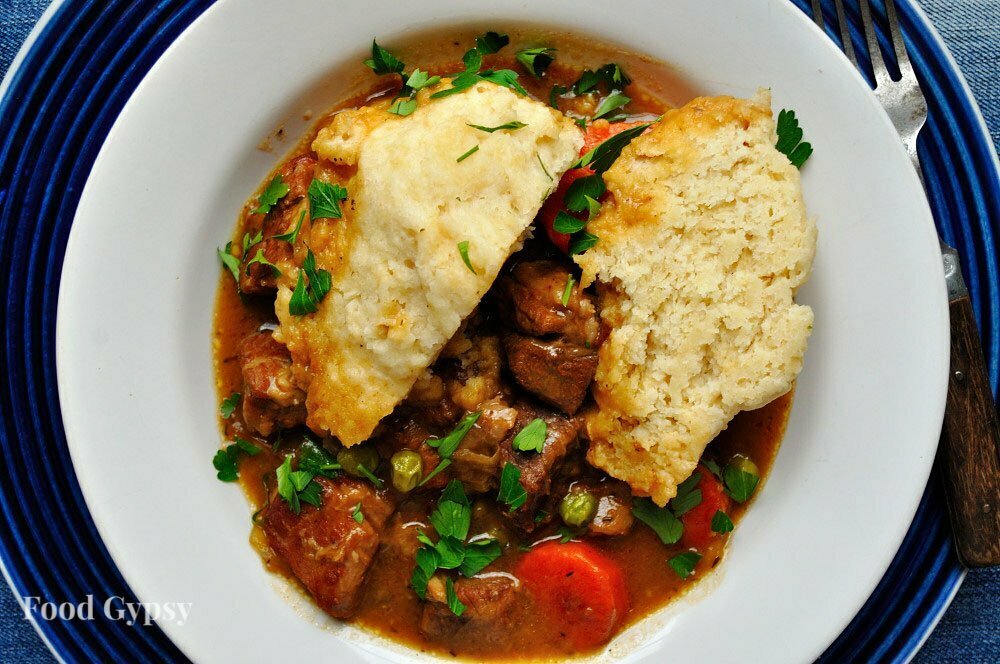
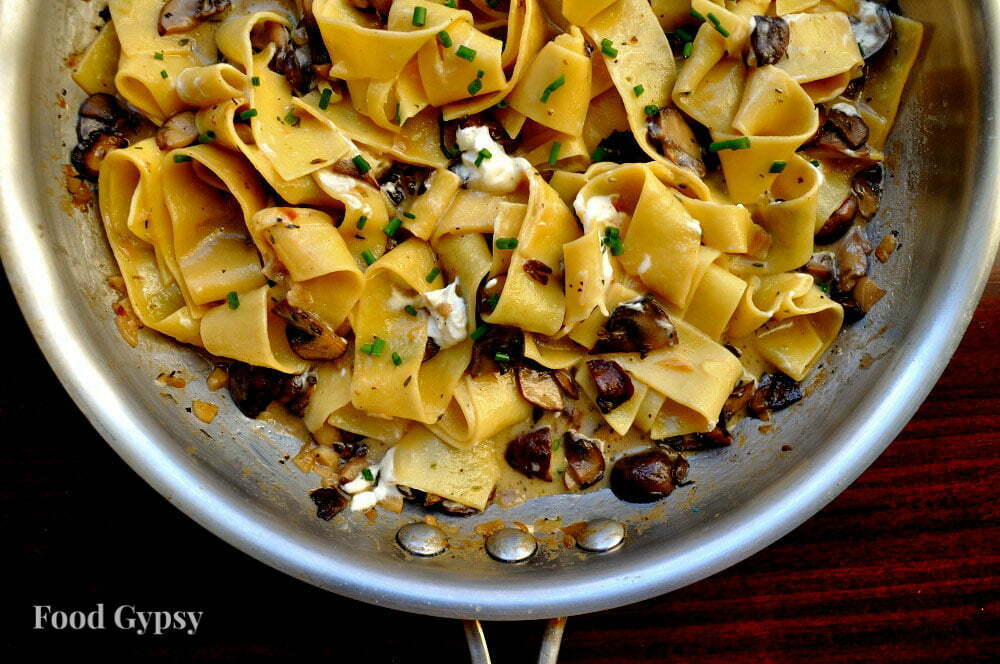
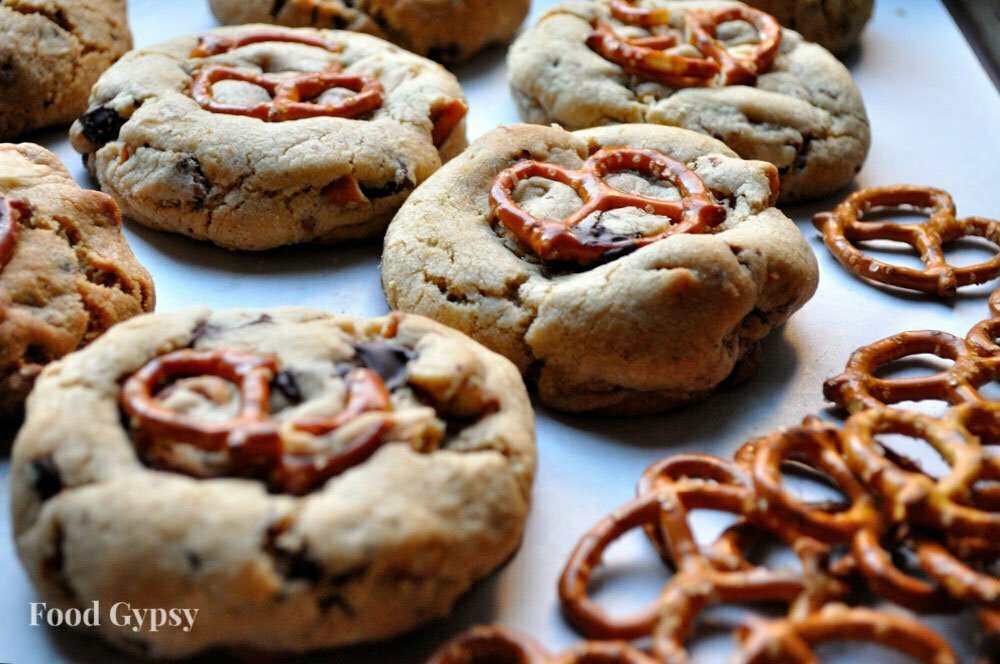
I loved your post! Hubby bought me a Molecule-r Gastronomy kit for Christmas but I’ve been too busy to clear the decks, watch the DVD’s and play with it. Your post has inspired me to get to it. I think I’ll start with some spherified cinnamon hearts…Thanks!
Thank you Jennifer! I admit it was a real education in molecular for me and not as hard as I thought, actually quite approachable if you have a brain that likes to be busy. Keep the comments coming, maybe we can talk Chef B into doing something fun more often!
[…] A Molecular Valentine | Food Gypsy […]